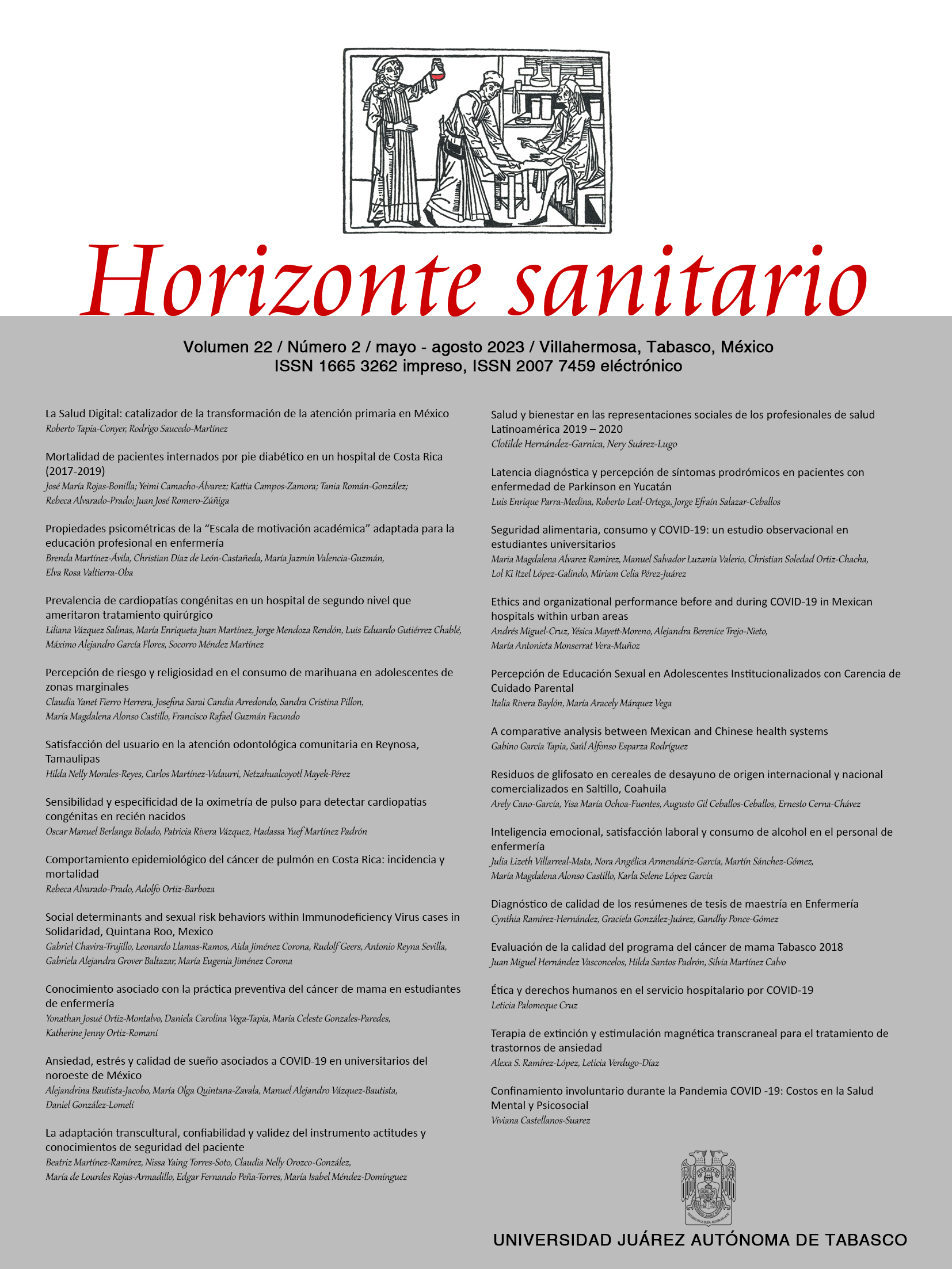Perception of risk and religiosity in the consumption of marijuana in adolescents from marginal areas
DOI:
https://doi.org/10.19136/hs.a22n2.5427Abstract
Objective: To describe the effect of the perception of risk and religiosity on the consumption of marijuana in adolescents from marginal areas of the State of Chihuahua, Chihuahua.
Materials and methods: Study descriptive correlational design. The sampling was simple random probabilistic. The final sample consisted of 248 adolescents between the ages of 12 and 17 from marginal areas of Chihuahua. A personal data card, religiosity inventory and the risk perception scale were used.
Results: 59.3% of the adolescents interviewed were men, of whom 59.7% said they were Catholic and 23% Christian. 16.1% indicated marijuana use at some time in their life, and 6.5% in the last year. The logistic regression model of the religiosity and risk perception variables showed an explained variance of 19% for marijuana use at some time in life, highlighting that the higher the risk perception (β=-0.032, p<.001) and a higher religiosity index (β=-0.023, p<0.001), the lower the probability of marijuana use.
Conclusions: Risk perception and religiosity in adolescents from marginal areas show to be protective factors for marijuana use. These results should be analyzed in greater depth to be considered in prevention programs for drug use in marginal populations.
Keywords: Adolescence; Marihuana; Religion; Perception; Risk.
Downloads
Downloads
Published
Issue
Section
License
Copyright (c) 2023 Horizonte Sanitario

This work is licensed under a Creative Commons Attribution-NonCommercial-ShareAlike 4.0 International License.





























